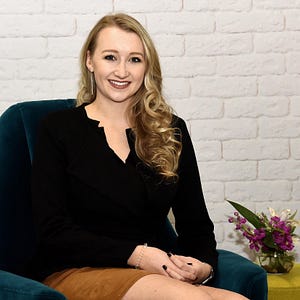The rise of bite-size content, which saw explosive growth with TikTok, inflamed a long-held fear for brands: It’s harder than ever to capture and retain audience attention. I’ve got bad news for you. Audience attention span isn’t the issue; your content is.
Long live long-form
TikTok is delivering snackable content to audiences at a ridiculously rapid pace. But there’s a large-and-in-charge group of creators delivering a feast to their audiences: video essayists on YouTube. The era of multi-hour video essays has shown that there’s a market for interesting content, no matter how long or unwieldy.
I have never played Roblox (and if I’m honest, I’m not even sure what it is?), but I have watched a nearly two-hour video essay deep-diving into the history of the “Roblox Oof” sound. Ten million other people did, too. I’ve also never seen the show Gossip Girl (a pop culture sin, I’m aware), but I have watched six hours of content recapping the first three seasons.
Yet, I haven’t seen any brands taking advantage of this thriving content style.
Why do I watch all these videos on topics that don’t apply to me? Because the topic doesn’t matter as much as the voice sharing it. I like the creators, their unique commentary and POV, and their analysis on various topics — all of which brands can offer to their audiences.
Good content demands attention
These video essayists aren’t afraid to go big and demand attention. Yet brands often let the fear of short attention spans get the best of them, resulting in taking the cop-out and creating short (often unremarkable) content, mostly in the form of ads.
Over the past few years, we’ve seen the rise of two content camps. Camp 1 is short-form, quick-hit content that grabs seconds of attention — TikToks, Instagram Reels, tweets. Camp 2 is long-form, thought-provoking content that engages the audience on a deeper level by sharing expertise or teaching something new — podcasts, video essays, newsletters. While both camps are booming, brands are firmly parked in Camp 1. But for brands brave enough to make the jump, there are tons of opportunities for brand-building content in Camp 2.
Creating quick-hit content that chases the sweet but temporary high of good performance metrics is easy, but these posts are forgotten as soon as users scroll past them. It’s a bit harder to create meaningful content that actually speaks to an audience and resonates beyond a like on their feed. But it’s worth it.
At Codeword, when we talk about helping brands act like creators, this is what we mean. There’s a true market for good content — even ridiculously long, nine-and-a-half-hour content about TV shows that ended over a decade ago — and we want to help brands create things people actually want to see.
Here’s an example. For the past two years, Codeword has created a trend report for the new year, something many agencies spend months building and considerable budgets to produce. Us? We think an afternoon is all you need, especially when the team is super plugged into their worlds of expertise. The results are a collection of smart, slightly unhinged, and deeply insightful predictions for the year ahead. It’s a genuinely fun piece of media to consume — but it also highlights who we are, what we do, and how we can help boost clients’ creativity. This year’s report is a whopping 77 slides. When it’s worth it, we aren’t afraid to go big.
(Check out our predictions for 2024. Spoiler alert: mortadella is in, baby.)
The solution
Our mission at Codeword is to help brands act like creators, and creators make content, not ads (even when they’re making ads). If brands want to achieve the views, engagement, and loyalty from their audience that creators receive, then the focus needs to be less on selling and more on creating something worth looking at.
For 2024 and beyond, it’s out with the old (boring ads pretending to be social media) and in with the new (attention-grabbing content that doesn’t apologize for taking up time and space). Your audience will thank you for it.
